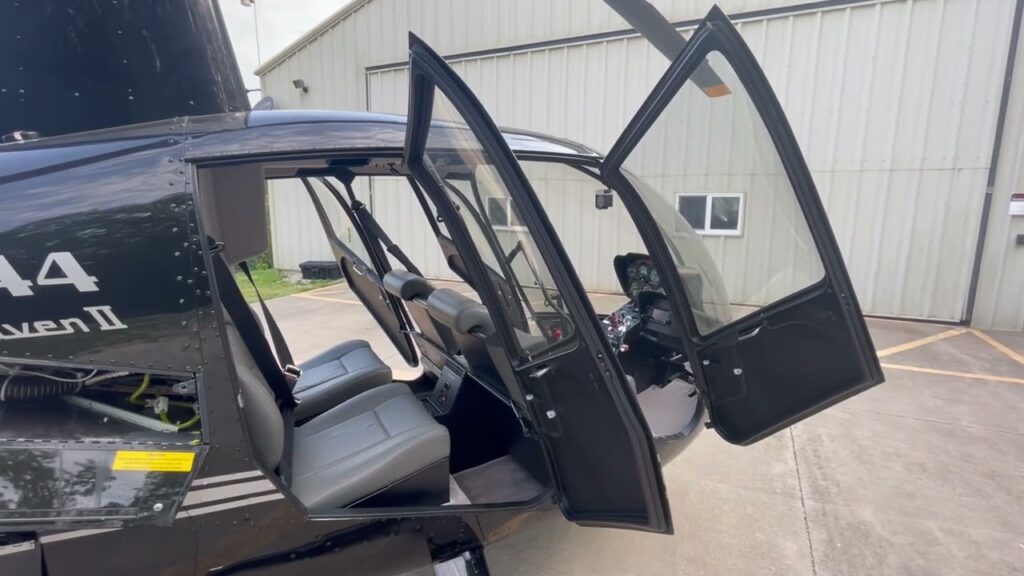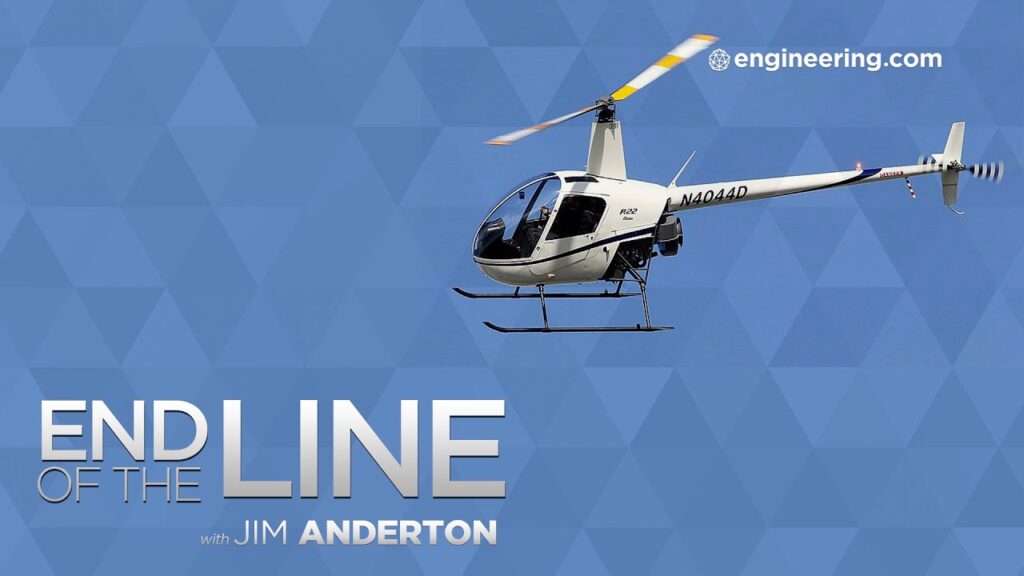A Glimpse into the 1981 Bell 206 BIII JetRanger’s Legacy
The 1981 Bell 206 BIII JetRanger stands as an icon of aviation history, renowned for its reliability and versatility in a variety of roles. Originating from a lineage of success, this model was built upon the strong foundations set by its predecessors, embodying the advancements of its era. Pilots and passengers alike have revered the JetRanger for its exceptional performance, especially in the context of Mexico’s diverse and challenging landscapes.
One of the key features that contributed to the JetRanger’s legacy was its Allison 250-C20B turbine engine, known for its dependability and efficiency. The powerplant allowed the helicopter to prosper in a wide array of operations, from executive transport to news gathering, highlighting its multi-purpose design. Over Mexico’s sprawling urban centers and remote rural locations, the 1981 Bell 206 BIII JetRanger became a common sight, trusted for its durability and steadfast service.
In global aviation circles, the Jetranger earned a reputation as a workhorse, which was only further solidified by its use in Mexico. Its capability to handle high-altitudes and hot climates without sacrificing operational capability made it a staple in both civilian and military fleets. The JetRanger’s design facilitated a range of critical missions, including search and rescue efforts, contributing to its legendary status within the country’s aviation history.
The JetRanger’s influence goes beyond its technical achievements; it has ingrained itself into the cultural fabric of aviation. In Mexico, it inspired a generation of pilots and laid a solid foundation for the country’s aerial operations. Even after decades of service, the 1981 Bell 206 BIII JetRanger continues to be celebrated for its pioneering role and lasting impact on helicopter aviation in Mexico and beyond.
The 1981 Bell 206 BIII JetRanger: A Staple in Mexican Aviation
The 1981 Bell 206 BIII JetRanger has long been a familiar sight in the skies over Mexico, serving a variety of roles that showcase its versatility and reliability. Originally designed for military purposes, the JetRanger has successfully transitioned into civilian life, becoming a pivotal asset for both governmental and private sectors. Its presence in Mexico is particularly prominent, with the aircraft being used for tasks ranging from executive transportation to aerial surveying, law enforcement, and emergency medical services. The Bell 206 BIII’s adaptability is a testament to its enduring design, which seamlessly fits the diverse demands of Mexican aviation.
Mexican operators have long appreciated the Bell 206 BIII for its exceptional performance in hot and high conditions, which are often encountered in the rugged terrain of the country. This capability is rooted in the aircraft’s robust Allison 250-C20B turbine engine and its ability to maintain power in less than optimal atmospheric conditions. The helicopter’s reliability is further enhanced by its simple, yet effective, design which makes it relatively easy to maintain and operate. These features have made the Bell 206 BIII JetRanger a favored choice for pilots who frequently contend with Mexico’s challenging landscapes, from arid deserts to mountainous regions.
Despite newer models on the market, the 1981 Bell 206 BIII JetRanger continues to be a highly sought-after aircraft in Mexico due to its proven track record and cost-efficiency. The comparatively low operating costs and the widespread availability of spare parts and qualified technicians contribute to its popularity. Even with decades of operation, these helicopters remain integral to the Mexican aviation industry, often seen helping in critical missions that serve the community or in private operations that cater to tourism and business activities. The JetRanger’s legacy as a reliable workhorse shows no signs of waning, as it continues to be an essential player in Mexico’s aviation narrative.
Exploring the Features of the 1981 Bell 206 BIII JetRanger
The 1981 Bell 206 BIII JetRanger has long been regarded as one of the most illustrious helicopters ever to grace the skies of Mexico. Its combination of reliability, versatility, and cost-effectiveness has made it a preferred choice for a variety of missions, ranging from executive transport to aerial surveying. The JetRanger’s reputation for safety and its impressive operational record has ensured its place as a legacy aircraft in the realm of rotary-wing aviation.
One of the key features of the Bell 206 BIII JetRanger is its powerful Allison 250-C20B turbine engine. This robust powerplant is known for its durability and smooth performance, providing pilots with the confidence they need during flight. Its ability to deliver exceptional power-to-weight ratio enhances the JetRanger’s capabilities, allowing it to reach cruising speeds of up to 122 knots and a range of approximately 374 nautical miles.
Avionics play a pivotal role in the functionality of any aircraft, and the 1981 Bell 206 BIII JetRanger was ahead of its time with a forward-thinking panel. Standard navigation aids, including VOR and ILS systems, coupled with contemporary communication radios, give pilots the tools necessary for safe and effective flights. Even though modern upgrades are often integrated into existing models, the original equipment still stands as a testament to the helicopter’s advanced design for its era.
The helicopter’s interior has been designed with both comfort and utility in mind. The five-seat configuration offers ample space for passengers while providing flexibility for cargo when required. High-quality materials and consideration for ergonomic design were also priorities that have contributed to the enduring appeal of the JetRanger’s cabin space, both in the context of commercial transport and private ownership.
For those seeking a helicopter capable of performing in a variety of environmental conditions, the 1981 Bell 206 BIII JetRanger’s adaptability is a formidable attribute. Its rugged construction allows it to operate effectively at high altitudes and in hot climates—a crucial aspect for operations in the diverse landscapes of Mexico. The JetRanger’s skid landing gear also ensures a resilient platform for landings on uneven terrain, reinforcing its reputation as an aircraft suited for an array of missions and purposes.
Why the 1981 Bell 206 BIII JetRanger Remains a Popular Choice in Mexico
The 1981 Bell 206 BIII JetRanger stands out in the aviation market in Mexico due to its impressive combination of reliability, versatility, and cost-effectiveness. Despite being several decades old, this model continues to be highly sought after by a variety of users ranging from private owners to commercial operators. The JetRanger’s longevity can be attributed to its time-tested design, which has proven itself in the diverse and often challenging flight conditions found across Mexico.
One of the primary factors contributing to the JetRanger’s popularity in Mexico is its exceptional reliability. The 1981 Bell 206 BIII has a solid track record of performance, featuring a robust engine and mechanical simplicity that make it a dependable choice for operators who value consistency and ease of maintenance. This reliability is particularly important in Mexico, where remote and rugged landscapes require a helicopter that can perform without fail, whether it’s servicing oil platforms in the Gulf of Mexico or ferrying tourists to distant archaeological sites.
In addition to its reliability, the Bell 206 BIII is revered for its versatility. It can adapt to a multitude of roles, including executive transport, emergency medical services, and agricultural work. This adaptability has made it a mainstay in the Mexican aviation sector, where varying altitudes and climates demand an aircraft that can handle a broad range of conditions and tasks. Operators appreciate the JetRanger’s ability to switch roles with minimal downtime, a feature that maximizes utility while reducing operational costs.
The cost of operation is another pivotal aspect that keeps the 1981 Bell 206 BIII JetRanger in active service throughout Mexico. Its fuel efficiency and lower maintenance expenses, when compared to more modern helicopters, provide a more accessible entry point for operators who need the capabilities of a helicopter without the exorbitant costs. Additionally, the abundance of spare parts and experienced technicians familiar with the 206 BIII helps to keep it flying, making it an economically attractive option for a wide range of budgets.
Finally, the 1981 Bell 206 BIII has established a commendable safety record over the years, which is a cornerstone of its sustained presence in Mexico’s aerospace industry. The aircraft’s safety features and the pilot’s wide field of vision contribute to its sterling reputation. This aspect of the JetRanger’s design reassures operators and passengers alike, ensuring that the Bell 206 BIII remains a trusted workhorse in the skies of Mexico.
The Impact of the 1981 Bell 206 BIII JetRanger on Modern Helicopters
The 1981 Bell 206 BIII JetRanger is an iconic aircraft that has significantly influenced modern helicopter design and technology. Developed by Bell Helicopter, a subsidiary of Textron, this aircraft introduced several innovative changes that have become standard in today’s helicopters. One of the most prominent features of the JetRanger was its reliability, which was leaps and bounds ahead of its time. Pilots and operators valued the 206 BIII for its dependability in various flying conditions, which helped to establish trust in helicopter transportation for a variety of purposes, including news gathering, emergency medical services, and executive transport.
The power-to-weight ratio of the Bell 206 BIII set new standards in the industry. Equipped with a robust Allison 250-C20J turboshaft engine, the JetRanger could carry a substantial payload relative to its size, a trait that has been earnestly replicated in modern helicopters. It proved that efficient power management and advanced aerodynamics could enhance performance without compromising safety or increasing operational costs. This breakthrough steered subsequent helicopter manufacturers to make power and efficiency a focal point in their designs.
In addition to its engine prowess, the Bell 206 BIII featured a streamlined design that has influenced the aesthetic and functional elements of many modern helicopters. The sleek and simplistic appearance has not only influenced the external designs but also the cockpit layout. The advanced avionics and minimized mechanical complexity of the JetRanger made it a frontrunner in adopting a “glass cockpit”, which is a common characteristic in modern helicopter cockpits. This movement towards digitization has made flying helicopters more user-friendly and accessible to a greater number of pilots.
Furthermore, the Bell 206 BIII introduced modular design concepts which made maintenance and repairs more straightforward. This modularity has been a key feature embraced by modern helicopters, easing the logistical burden and reducing the downtime necessary for maintenance, thus allowing for higher aircraft availability and utilization rates. Such considerations have ultimately led to reduced operational costs and extended lifecycles for contemporary helicopter models.
Safety features in the 1981 Bell 206 BIII, like its fail-safe design and improved emergency handling capabilities, have had a lasting impact as well. Today’s helicopters have evolved these concepts into sophisticated systems that employ advanced material engineering and avionics that enhance flight safety. They have helped shape a culture of safety that prioritizes minimizing risks and maximizing pilot control during all phases of flight. The influence of the JetRanger’s design can be clearly observed in the emphasis put on safety in current helicopter production cycles.
Operating the 1981 Bell 206 BIII JetRanger: Insights from Mexican Pilots
The 1981 Bell 206 BIII JetRanger stands as a testament to enduring aviation design, cherished by many Mexican pilots for its reliability and performance. This particular model, which has been a workhorse in both civil and military operations, offers unique insights when operated in the diverse landscapes of Mexico. From the Sierra Madre mountain ranges to the intricate coastlines, pilots have come to appreciate the helicopter’s capabilities and quirks.
Mastery of the Machine is essential for pilots navigating the Mexican terrain. Those seated at the controls of the 1981 Bell 206 BIII JetRanger note the balance between its light frame and robust engine power. While its agility is an asset, the Mexican pilots emphasize the necessity of a deep understanding of its operational limits, particularly during high-altitude flights or manoeuvring in tight spaces often found in urban areas or near natural landmarks.
The impact of weather conditions on flight operations is another crucial factor. Seasoned pilots flying the JetRanger in Mexico are intimately familiar with the challenges presented by sudden weather changes, which can include turbulent winds or rapid shifts in visibility. Their experiences underscore the importance of thorough pre-flight checks and adhering to strict safety protocols to mitigate potential risks associated with Mexico’s unpredictable weather patterns.
Pilots also highlight the versatility of the Bell 206 BIII JetRanger as a pivotal factor in its sustained popularity across Mexican skies. This model’s adaptability makes it suitable for a variety of missions including executive transport, emergency medical services, and aerial surveys. Its operational efficacy, despite the age, continues to affirm the Bell 206 BIII’s esteemed status among Mexican pilots.
However, operating a helicopter of this age also requires a keen attention to maintenance. The longevity of the Bell 206 BIII JetRanger in Mexico can be attributed to the meticulous upkeep performed by skilled maintenance crews. Pilots often share tales of dedicated engineers who work tirelessly to keep these venerable birds flight-ready, ensuring that they meet both national and international aviation standards, and preserve the safety and trust of those who fly them.



